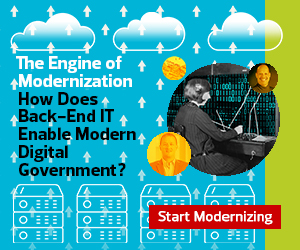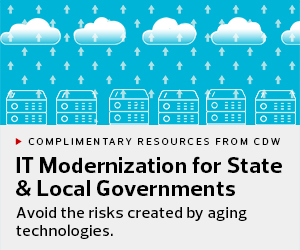In late May, Vermont’s legislature approved a $7.3 billion budget for fiscal year 2022, and included $66 million for technology upgrades. Although small in the scope of the larger budget, the funding was hard-won by state CIO John Quinn.
In a recent interview with StateTech, Quinn discussed the shift to hybrid work, the state’s IT modernization vision and how modern infrastructure supports the creation of digital government services.
STATETECH: Is Vermont embracing or considering a hybrid work setup for state employees?
Quinn: We absolutely are. In fact, one of the last things we want to do is go back to exactly the way things were. It’d be too bad if we didn’t learn from what we’ve been through in the past year, and I think we definitely have. The governor put together a government operations task force a few months ago made up of me, the secretary of administration, the secretary of human services and the secretary of transportation to look at a number of things around what coming back to the office would look like. Are we coming back? What are the opportunities to give flexibility to the employees? Are there additional benefits that can come out of this, not only to the taxpayers but to the employees?
We’re in the middle of policy development now, looking at what the best approach is this fall when we come back.
STATETECH: What technologies are you investing in to support security and productivity for long-term hybrid work?
Quinn: There are a number of things that we’ve done and continue to do to build toward this “work from anywhere” type of environment. One of the early policies that we enacted was no more desktops, laptops only, because we want to be flexible. We want to be able to adapt to changing environments and what the future holds —maybe future pandemics, maybe another work-from-home situation next winter.
Not only did we put that policy in place but we’ve enacted a number of cybersecurity tools and policies to ensure that we’re doing all we can to protect our data, our citizens’ data and our network security. We had to expand very quickly from a couple of hundred VPN connections a day to enough to cover a workforce of 10,000.
Our endpoint protection has paid dividends over the past year-plus with people working offsite. We’ve found that people are working from a number of different states throughout this pandemic and coming back into our network. So, some of those security tools that we bought, like CrowdStrike, have really given us visibility and protected our network from a number of potential threats.
VIDEO: How are states securing remote work environments?
STATETECH: What technologies are behind the infrastructure to rapidly roll out digital government services?
Quinn: If it can go in the cloud and it makes sense to go in the cloud, we’re putting in the cloud. We’re working on our procurement language to ensure that we’re off on the right foot and we’re protecting ourselves and our data to the best of our ability. These things that are commodities, however, like cloud services, are things the state shouldn’t be involved with, from my perspective. We have no business running a data center. We don’t have the skill sets and we don’t have the money to run a top-tier data center. These are things that we want to hire professionals for, to let them worry about those types of things.
STATETECH: What kind of infrastructure is needed to support something like a single sign-on service to create a single identity across disparate government services?
Quinn: As we build licensing systems, permit systems and customer-supported digital government services, we’re looking at the back ends and using things like MuleSoft to connect the APIs together. Using a platform like Salesforce, where we can control the data to share across the enterprise, will allow us to put these things together behind the scenes to give the customer a single pane of glass for what they’re trying to do, and this goes for our government stakeholders also. When I apply for a business, I want the state of Vermont to know what I’m trying to do and to assist me and say, “Hey, John, you also need these eight permits in order to do that.” Because as a citizen, I don’t necessarily know that as someone starting a small business.
Everything we’re doing is done by design to make it easier later to put these systems together, to integrate and provide a platform to the citizens that will always be up to date and won’t have to be supported on the back end by a workforce here at the state.
We won’t need to be updating the application, necessarily, from a security patch standpoint. We won’t need to be upgrading our data center.
These are all things that will give us the ability to focus in on our customers, the business users, Vermonters, and to really focus on becoming experts on those applications to provide the best service possible.













